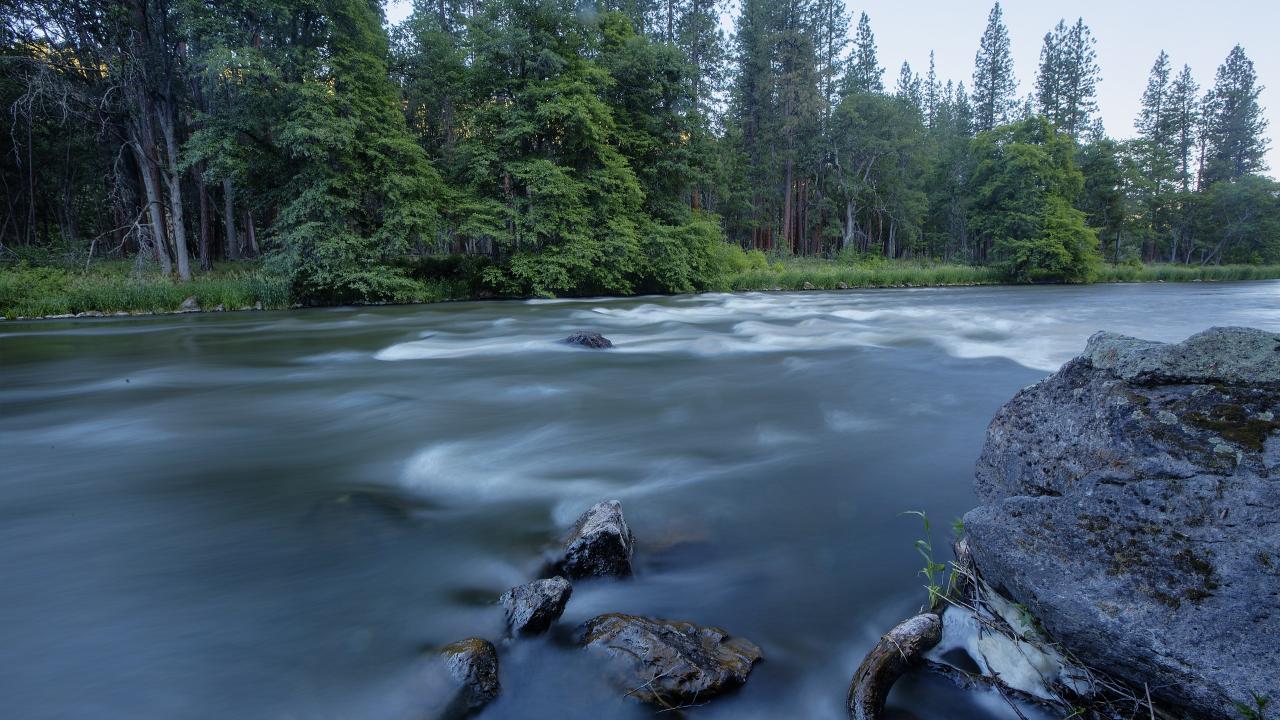
Discussing 'Deadbeat Dams' as Klamath Plan Moves Forward
Center for Watershed Sciences Director Andrew Rypel talks the importance of — and paths ahead for — California's dams
Quick Summary
- Researchers from the Center for Watershed Sciences are continuing to urge California to take a more comprehensive look at its dams as the first of four Klamath River dams is set to come down.
With the first of four Klamath River dams expected to be removed by the end of September, researchers from the Center for Watershed Sciences, part of the Institute of the Environment, are continuing to urge California to take a more comprehensive look at how it manages its dams to better serve the state’s people, environment, and economy.
“California’s dams are aging and many will require expensive reconstruction or rehabilitation,” according to a recently republished 2020 push for the state to take steps to take on its issue with “deadbeat dams.” “Many dams were built for landscapes, climates and economic purposes that no longer exist. California’s current dams reflect an accumulation of decisions over the past 170 years based on environmental, political, and socio-economic dynamics that have changed, sometimes radically.”
In the piece, researchers call for the formation of a California Dams Blue Ribbon Panel, development of a structured assessment tool to prioritize restoration projects, critical examination of legal frameworks surrounding management of dams, and the exploration of reservoirs as novel habitats for declining fishes.
Andrew Rypel, director of the Center for Watershed Sciences and a co-author of the post, recently discussed why the issue of "deadbeat dams" is as important as ever with the Institute, which counts Managing Water in a Changing World among its pillars:
Why should people be concerned with "deadbeat dams" in California?
Dams become really unsafe with time, especially if maintenance has been deferred. We need to be especially careful in California because of how old our dams are (the median dam age is 74 years) and how geologically active the landscape is. There are some examples in the news recently of failed dams, and we definitely want to avoid that. Also, dams have devastated some of our precious biodiversity, such as our native salmon and steelhead. These are species that have exceptional benefits to ecosystems and are important to our Indigenous and fishing communities.
How could a California Dams Blue Ribbon Committee help people in the state?
Just like with our own personal finances, it often helps to do a full accounting of large issues. A Blue Ribbon Committee could conduct a 360-degree analysis of the state of our dams and prioritize ways to better protect the security and safety of California’s people and frail biodiversity.
What are structured assessment tools, and how can they help solve issues surrounding deadbeat dams?
These are essentially statistical models that help us make decisions. They are tools, so you want to develop and use them as just one tool as part of a larger process. So, under certain circumstances, the tool may tell you the best management action will be “X.” But you don’t want to just do “X” right away. However, you can propose “X” as part of a process and have discussions with communities and decision makers, including potentially how to modify “X” to make it better. At a minimum, you might realize that “X” is wrong, and the model needs to be improved so that it doesn’t suggest “X” again.
How can progress be made in simplifying the complex legal issues surrounding dam removal?
The reality of aging dams is already pushing these legal frameworks forward. For example, as dams get older, they must maintain a license to operate through the Federal Energy Regulatory Commission (FERC). It was through this FERC process that the Klamath Dam removal was initiated.
In California, there is also increasing pressure to apply California Fish and Game Code 5937, which stipulates that waters below dams keep wild fish populations in “good condition.” Application of this law was the catalyst for recovering flows in Putah Creek (our local watershed in Davis), which over time has widely been regarded as an ecological success. It appears that there are more communities pushing for application and enforcement of 5937 — one example being to keep the Kern River in Bakersfield from drying.
What is the potential for reservoirs to serve as novel habitat for declining fishes?
This is a big idea that just hasn’t been looked at enough. For example, delta smelt are closely related to rainbow smelt, a fish species that successfully invaded deep cold lakes on the east coast and in the upper Midwest. Could delta smelt populations be established in deep cold California reservoirs? We already know that there are a handful of reservoirs that support naturally reproducing populations of Chinook salmon. These are adfluvial populations, meaning they live as adults in the reservoir lake and spawn in the tributary river(s). They never go to the ocean. It’s interesting, and we should at least investigate the potential to have reservoirs as emergency rooms and backup plans for threatened fish species like this. And we need more of this kind of thinking in California where we have 40 million people living on a fragile ecological landscape.
Adam Jensen is the strategic communications manager for the Institute of the Environment. He can be reached at admjensen@ucdavis.edu.